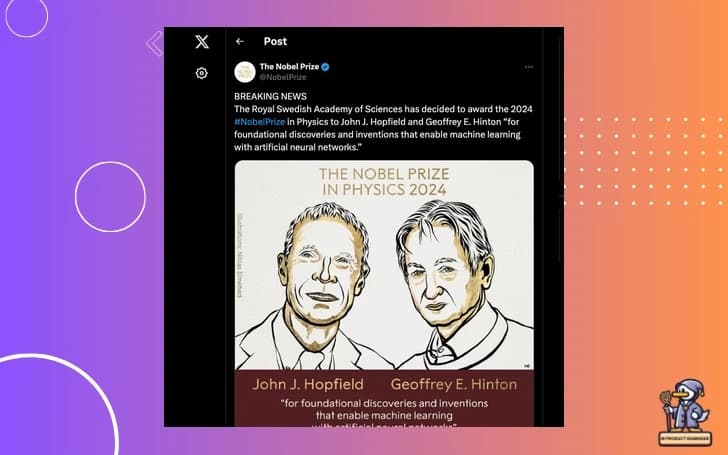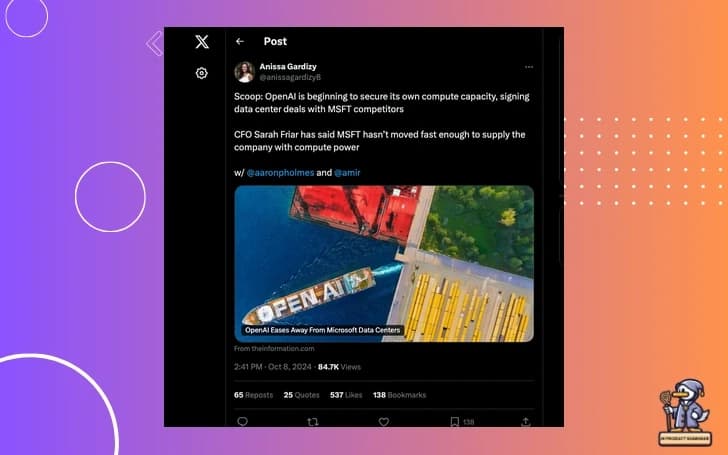🏆 Nobel Prize in Physics: A New Era for AI

Hello, DuckTypers! Prof. Rod here, ready to dive into the exciting world of AI developments. Let's start with some groundbreaking news that's shaking up the tech world.
The Royal Swedish Academy of Sciences has awarded the 2024 Nobel Prize in Physics to John J. Hopfield and Geoffrey E. Hinton "for foundational discoveries and inventions that enabled machine learning with artificial neural networks." This is a huge moment for our field, recognizing the immense impact of neural networks on modern technology.
Now, you might be wondering, "Prof. Rod, why is this such a big deal?" Well, let me break it down for you:
- It's the first time a "pure computer science" achievement has been recognized with a Nobel Prize in Physics.
- It highlights the growing intersection between physics and machine learning.
- It validates the importance of AI research in the broader scientific community.
But here's where it gets interesting: not everyone in the physics community is thrilled about this decision. Some argue that it might dilute the prestige of the prize or overshadow traditional physics achievements. What do you think, DuckTypers? Is this a well-deserved recognition or a controversial choice? Drop your thoughts in the comments!
Let's look at a simple diagram to understand the basic structure of a neural network:
Input Layer Hidden Layers Output Layer
(x) (h) (y)
| | |
| [W1] | [W2] |
+--->[ ]--------+--->[ ]--------+
| [ ] | [ ] |
+--->[ ]--------+--->[ ]--------+
[ ] [ ]
This is a fundamental concept that Hopfield and Hinton have built upon, leading to the advanced AI systems we use today.
🧠 Model Merging: Pushing the Boundaries of AI

Now, let's shift gears to some cutting-edge research that's pushing the boundaries of what's possible with large language models (LLMs).
A fascinating study from Google is exploring model merging at an unprecedented scale. They're investigating how to combine language models with up to 64 billion parameters. That's billion with a 'B', DuckTypers!
Here's why this matters:
- It could lead to more efficient and powerful AI models.
- It raises questions about the scalability of model merging techniques.
- It might change how we approach training and fine-tuning large models.
Let's break down the concept of model merging with some pseudocode:
def merge_models(model_A, model_B, alpha=0.5):
merged_model = {}
for param in model_A.parameters():
merged_model[param] = alpha * model_A[param] + (1 - alpha) * model_B[param]
return merged_modelThis is a simplified version, but it gives you an idea of how we might combine the knowledge of two models. The real challenge is doing this effectively at a massive scale.
What are your thoughts on this, DuckTypers? How do you think model merging could change the AI landscape? Share your ideas in the comments!
🚀 OpenAI's Quest for Compute Power

In a move that's stirring up the AI industry, OpenAI is taking steps to secure its own compute capacity. They're entering into data center agreements with Microsoft competitors, citing concerns over slow response times from Microsoft.
This is a big deal because:
- It shows the growing demand for massive computing power in AI research.
- It highlights potential challenges in the partnership between OpenAI and Microsoft.
- It could lead to more competition and innovation in AI infrastructure.
Here's a quick breakdown of why compute power is so crucial for AI development:
More Compute Power → Larger Models → Better Performance
→ Faster Training → Quicker Iterations
→ Complex Tasks → Advanced Capabilities
What do you think this means for the future of AI research and development? Will we see more AI companies following suit? Let me know your predictions!
💡 Advancements in LLMs and Inference Optimization

Let's wrap up with some exciting developments in language models and inference optimization.
First, we're seeing interesting comparisons between different model sizes. For instance, some 8B parameter models are outperforming their 11B counterparts in text-only tasks. This challenges the notion that bigger is always better.
Here's a simple visualization of this concept:
Model Size Performance
8B ████████████ (Text tasks)
11B ██████████ (Text tasks)
11B ████████████████ (Vision + Text tasks)
This shows us that specialization can sometimes trump raw size.
In the world of inference optimization, we're seeing promising results with INT8 mixed precision training. Some users are reporting up to 1.7x speedup on consumer-grade GPUs like the 4090, rivaling the performance of much more expensive hardware.
Let's break down what INT8 mixed precision means:
- INT8: 8-bit integer representation
- Mixed Precision: Using different levels of precision for different parts of the model
The benefits include:
- Reduced memory usage
- Faster computation
- Lower power consumption
DuckTypers, have any of you experimented with these optimization techniques? What results have you seen? Share your experiences in the comments!
INT8 Mixed Precision Discussion
🎬 Wrapping Up
That's all for today's QuackChat AI Update, DuckTypers! We've covered some groundbreaking developments, from Nobel Prize-winning neural networks to cutting-edge model merging techniques and optimization strategies.
Remember, the field of AI is constantly evolving, and staying informed is key to understanding and contributing to these advancements. Whether you're a seasoned AI engineer or just starting your journey, there's always something new to learn.
Before we sign off, I have a question for you: How do you think these developments will impact your work or studies in AI? Will you be incorporating any of these techniques into your projects?
Don't forget to like, subscribe, and share this video if you found it helpful. And hey, if you have any topics you'd like me to cover in future episodes, drop them in the comments below.
Until next time, keep quacking and happy coding! This is Prof. Rod, signing off.


